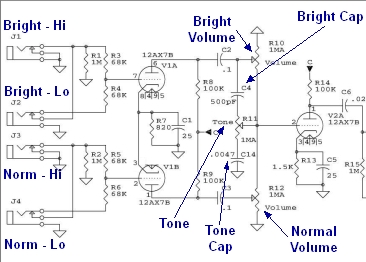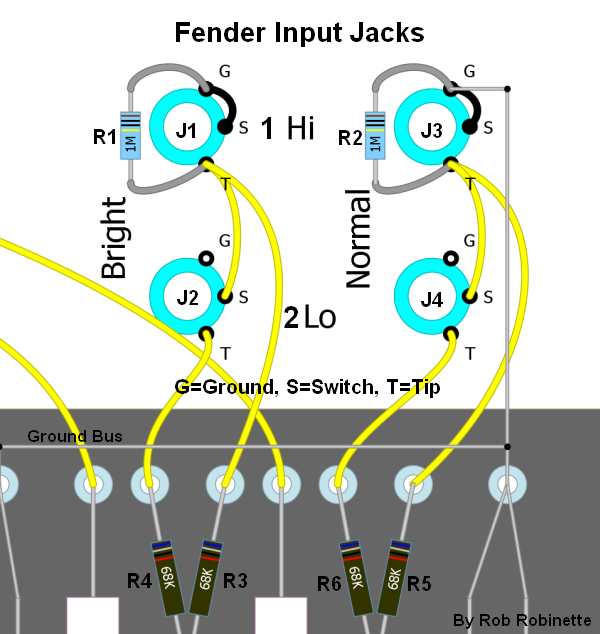BuzzKing
TDPRI Member
I know this is a bass amp but I would love your guys help on this since you are all so much more knowledgeable about tube amps than I am.
I am planning to build an amp based on the Ampeg B-15. This will not be a period correct build and will not be an exact copy. I plan to incorporate elements from the vintage amps as well as the reissue and some of the "kits" that are available.
There were many variations of this amp produced from the early sixties to the early seventies. A handbuilt reissue was recently made by Ampeg in limited quantities. And I have found two currently available/published "kits" online. I have located and researched all the schematics.
For those who are interested:
Ampeg schematics: (link removed)
Trinity Trip Top schematics: click here
CtG Electronics schematics: click here
For those of you that are not familiar with the Ampeg B-15 it is a low powered tube amp with 6SL7 preamp tubes and a Baxandall tone stack. The variations are largely in the type of power tube biasing and the type of rectification. All the schematics I have looked at pretty much use the same preamp and phase inverter with the exception of the location of the volume pot (either before or after the tone controls).
I will be incorporating switchable bias (adjustable fixed vs. cathode) and switchable rectification (tube vs. SS). I will either incorporate two channels with the volume pot in the two different locations or I will try to come up with a switching scheme to "move" the volume pot.
Where I am struggling in the design phase is in three areas.
1) Input wiring / input impedance
2) Heater center tap
3) Filter caps
I will address each of these questions more specifically in separate posts.
I will publish schematics and layouts when I finish them and will ultimately start a build thread.
I would really appreciate your guys help along the way.
Thanks,
BuzzKing
I am planning to build an amp based on the Ampeg B-15. This will not be a period correct build and will not be an exact copy. I plan to incorporate elements from the vintage amps as well as the reissue and some of the "kits" that are available.
There were many variations of this amp produced from the early sixties to the early seventies. A handbuilt reissue was recently made by Ampeg in limited quantities. And I have found two currently available/published "kits" online. I have located and researched all the schematics.
For those who are interested:
Ampeg schematics: (link removed)
Trinity Trip Top schematics: click here
CtG Electronics schematics: click here
For those of you that are not familiar with the Ampeg B-15 it is a low powered tube amp with 6SL7 preamp tubes and a Baxandall tone stack. The variations are largely in the type of power tube biasing and the type of rectification. All the schematics I have looked at pretty much use the same preamp and phase inverter with the exception of the location of the volume pot (either before or after the tone controls).
I will be incorporating switchable bias (adjustable fixed vs. cathode) and switchable rectification (tube vs. SS). I will either incorporate two channels with the volume pot in the two different locations or I will try to come up with a switching scheme to "move" the volume pot.
Where I am struggling in the design phase is in three areas.
1) Input wiring / input impedance
2) Heater center tap
3) Filter caps
I will address each of these questions more specifically in separate posts.
I will publish schematics and layouts when I finish them and will ultimately start a build thread.
I would really appreciate your guys help along the way.
Thanks,
BuzzKing



